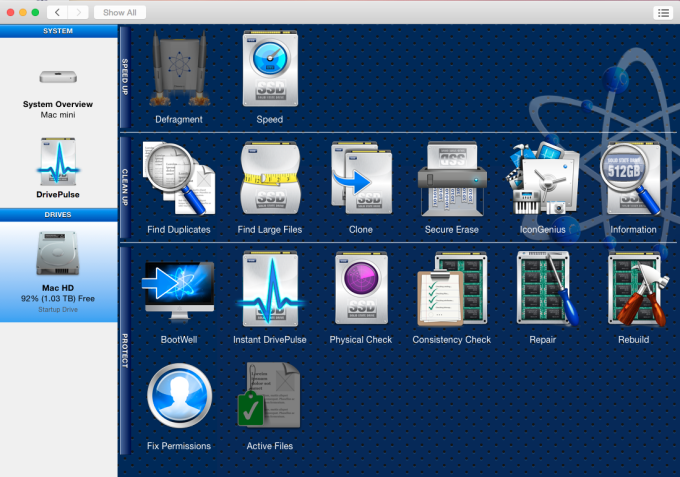
In addition, Disk Utility has gained a number of new features in recent years, and it can now repair faults that might once have been out of its reach. I credit these and other improvements to OS X with the reduced frequency of disk errors. (Solid-state drives don’t require such defragging.) And, when you perform a safe boot (starting your Mac with the Shift key held down), OS X runs a more extensive set of diagnostic and repair procedures without you doing anything else.

OS X performs certain disk maintenance tasks automatically in the background-for example, it defragments smaller files on the fly, keeping all their segments contiguous on a hard disk so they’ll load faster.
DRIVE GENIUS ALTERNATIVE MAC SOFTWARE
One reason is that Apple has made ongoing hardware and software improvements that keep disks running happily more of the time. Regardless of those details, when your disk is misbehaving, you probably don’t care if you have an invalid B-tree node size or an overlapped extent allocation you just want the symptoms to go away. (Directory damage, perhaps the most common type of disk error, can produce symptoms such as missing or inaccessible files, applications that won’t launch, and startup problems.) Most of these tools can also repair a partition map, which is a chunk of data that describes how data is to be stored on a disk and many can repair certain kinds of errors with individual files, too (such as damaged preference files). Does that advice still make sense?ĭisk utilities claim to be able to fix problems involving a volume’s directory, which keeps track of where all your files and folders are. Yet for many years conventional wisdom held that you also needed at least one third-party disk repair utility on hand to solve the problems Disk Utility couldn’t.

OS X’s Disk Utility-which enables you to format, partition, repair, and perform other kinds of maintenance on disks (including SSDs, flash drives, and disk images)-is good for what it does.


 0 kommentar(er)
0 kommentar(er)
